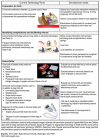60 Million non-facility births: who can deliver in community settings to reduce intrapartum-related deaths?
- PMID: 19815200
- PMCID: PMC3428830
- DOI: 10.1016/j.ijgo.2009.07.010
60 Million non-facility births: who can deliver in community settings to reduce intrapartum-related deaths?
Abstract
Background: For the world's 60 million non-facility births, addressing who is currently attending these births and what effect they have on birth outcomes is a key starting point toward improving care during childbirth.
Objective: We present a systematic review of evidence for the effect of community-based cadres-community-based skilled birth attendants (SBAs), trained traditional birth attendants (TBAs), and community health workers (CHWs)-in improving perinatal and intrapartum-related outcomes.
Results: The evidence for providing skilled birth attendance in the community is low quality, consisting of primarily before-and-after and quasi-experimental studies, with a pooled 12% reduction in all cause perinatal mortality (PMR) and a 22%-47% reduction in intrapartum-related neonatal mortality (IPR-NMR). Low/moderate quality evidence suggests that TBA training may improve linkages with facilities and improve perinatal outcomes. A randomized controlled trial (RCT) of TBA training showed a 30% reduction in PMR, and a meta-analysis demonstrated an 11% reduction in IPR-NMR. There is moderate evidence that CHWs have a positive impact on perinatal-neonatal outcomes. Meta-analysis of CHW packages (2 cluster randomized controlled trials, 2 quasi-experimental studies) showed a 28% reduction in PMR and a 36% reduction in early neonatal mortality rate; one quasi-experimental study showed a 42% reduction in IPR-NMR.
Conclusion: Skilled childbirth care is recommended for all pregnant women, and community strategies need to be linked to prompt, high-quality emergency obstetric care. CHWs may play a promising role in providing pregnancy and childbirth care, mobilizing communities, and improving perinatal outcomes in low-income settings. While the role of the TBA is still controversial, strategies emphasizing partnerships with the health system should be further considered. Innovative community-based strategies combined with health systems strengthening may improve childbirth care for the rural poor, help reduce gross inequities in maternal and newborn survival and stillbirth rates, and provide an effective transition to higher coverage for facility births.
Figures




Similar articles
-
Reducing intrapartum-related deaths and disability: can the health system deliver?Int J Gynaecol Obstet. 2009 Oct;107 Suppl 1:S123-40, S140-2. doi: 10.1016/j.ijgo.2009.07.021. Int J Gynaecol Obstet. 2009. PMID: 19815205 Review.
-
Delivering interventions to reduce the global burden of stillbirths: improving service supply and community demand.BMC Pregnancy Childbirth. 2009 May 7;9 Suppl 1(Suppl 1):S7. doi: 10.1186/1471-2393-9-S1-S7. BMC Pregnancy Childbirth. 2009. PMID: 19426470 Free PMC article. Review.
-
Can facility delivery reduce the risk of intrapartum complications-related perinatal mortality? Findings from a cohort study.J Glob Health. 2018 Jun;8(1):010408. doi: 10.7189/jogh.08.010408. J Glob Health. 2018. PMID: 29564085 Free PMC article.
-
Communities, birth attendants and health facilities: a continuum of emergency maternal and newborn care (the Global Network's EmONC trial).BMC Pregnancy Childbirth. 2010 Dec 14;10:82. doi: 10.1186/1471-2393-10-82. BMC Pregnancy Childbirth. 2010. PMID: 21156060 Free PMC article. Clinical Trial.
-
Effectiveness of the WHO Safe Childbirth Checklist program in reducing severe maternal, fetal, and newborn harm in Uttar Pradesh, India: study protocol for a matched-pair, cluster-randomized controlled trial.Trials. 2016 Dec 7;17(1):576. doi: 10.1186/s13063-016-1673-x. Trials. 2016. PMID: 27923401 Free PMC article. Clinical Trial.
Cited by
-
Addressing health system barriers to access to and use of skilled delivery services: perspectives from Ghana.Int J Health Plann Manage. 2016 Oct;31(4):e235-e253. doi: 10.1002/hpm.2291. Epub 2015 Mar 30. Int J Health Plann Manage. 2016. PMID: 25824650 Free PMC article.
-
Neonatal death in low- to middle-income countries: a global network study.Am J Perinatol. 2012 Sep;29(8):649-56. doi: 10.1055/s-0032-1314885. Epub 2012 May 29. Am J Perinatol. 2012. PMID: 22644832 Free PMC article.
-
Training Zambian traditional birth attendants to reduce neonatal mortality in the Lufwanyama Neonatal Survival Project (LUNESP).Int J Gynaecol Obstet. 2012 Jul;118(1):77-82. doi: 10.1016/j.ijgo.2012.02.012. Epub 2012 Apr 27. Int J Gynaecol Obstet. 2012. PMID: 22542215 Free PMC article. Clinical Trial.
-
Care during labor and birth for the prevention of intrapartum-related neonatal deaths: a systematic review and Delphi estimation of mortality effect.BMC Public Health. 2011 Apr 13;11 Suppl 3(Suppl 3):S10. doi: 10.1186/1471-2458-11-S3-S10. BMC Public Health. 2011. PMID: 21501427 Free PMC article. Review.
-
The effect of providing skilled birth attendance and emergency obstetric care in preventing stillbirths.BMC Public Health. 2011 Apr 13;11 Suppl 3(Suppl 3):S7. doi: 10.1186/1471-2458-11-S3-S7. BMC Public Health. 2011. PMID: 21501458 Free PMC article. Review.
References
-
- UNICEF . State of the World’s Children 2009. UNICEF; New York: 2009.
-
- Lawn JE, Lee AC, Kinney M, Sibley I, Carlo WA, Paul VK, et al. Two million intrapartum stillbirths and neonatal deaths: where, why, and what can we do? Int J Gynecol Obstet. 2009;107:S5–S19. - PubMed
-
- Knippenberg R, Lawn JE, Darmstadt GL, Begkoyian G, Fogstad H, Walelign N, et al. Systematic scaling up of neonatal care in countries. Lancet. 2005;365(9464):1087–98. - PubMed
-
- Hofmeyr J, Bergstrom S, Okong P, Lee AC, Lawn J, Darmstadt GL, et al. Obstetric care in low resource settings: what, who, how, and overcoming challenges to scale up. Int J Gynecol Obstet. 2009;107:S21–S45. - PubMed

